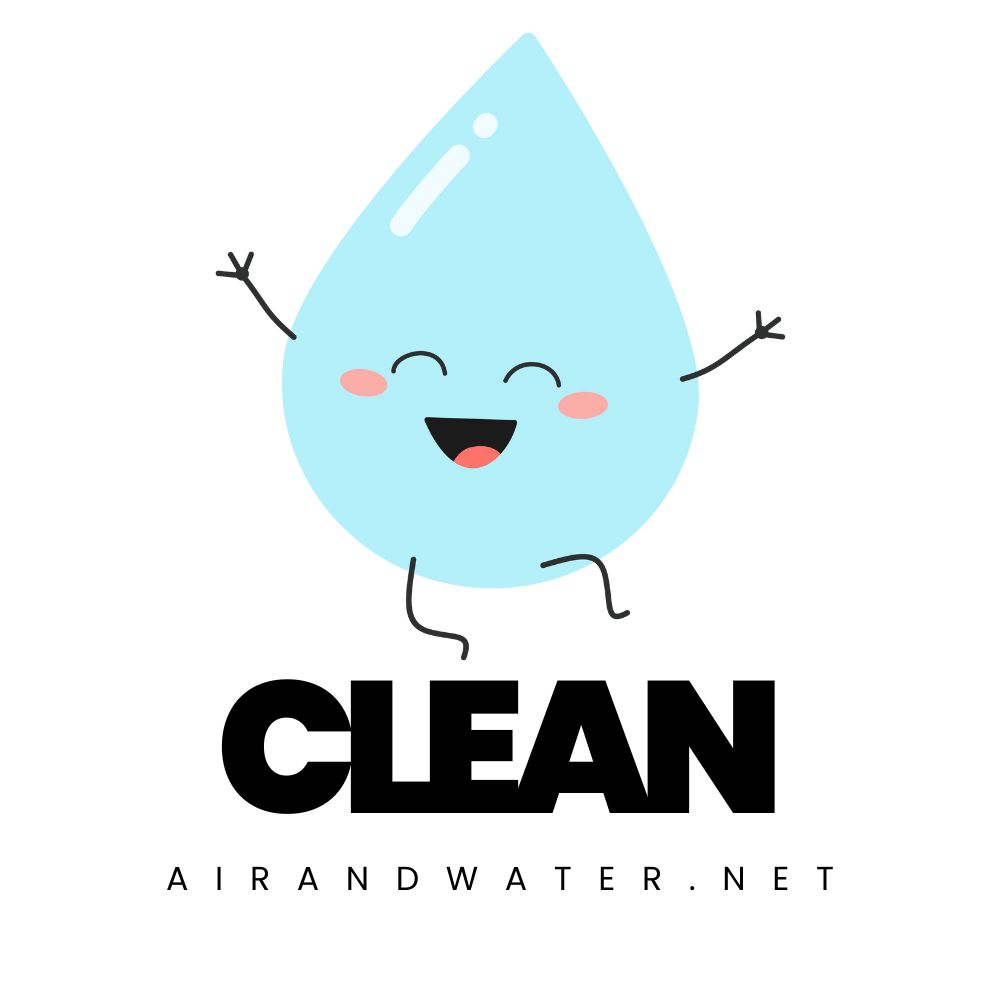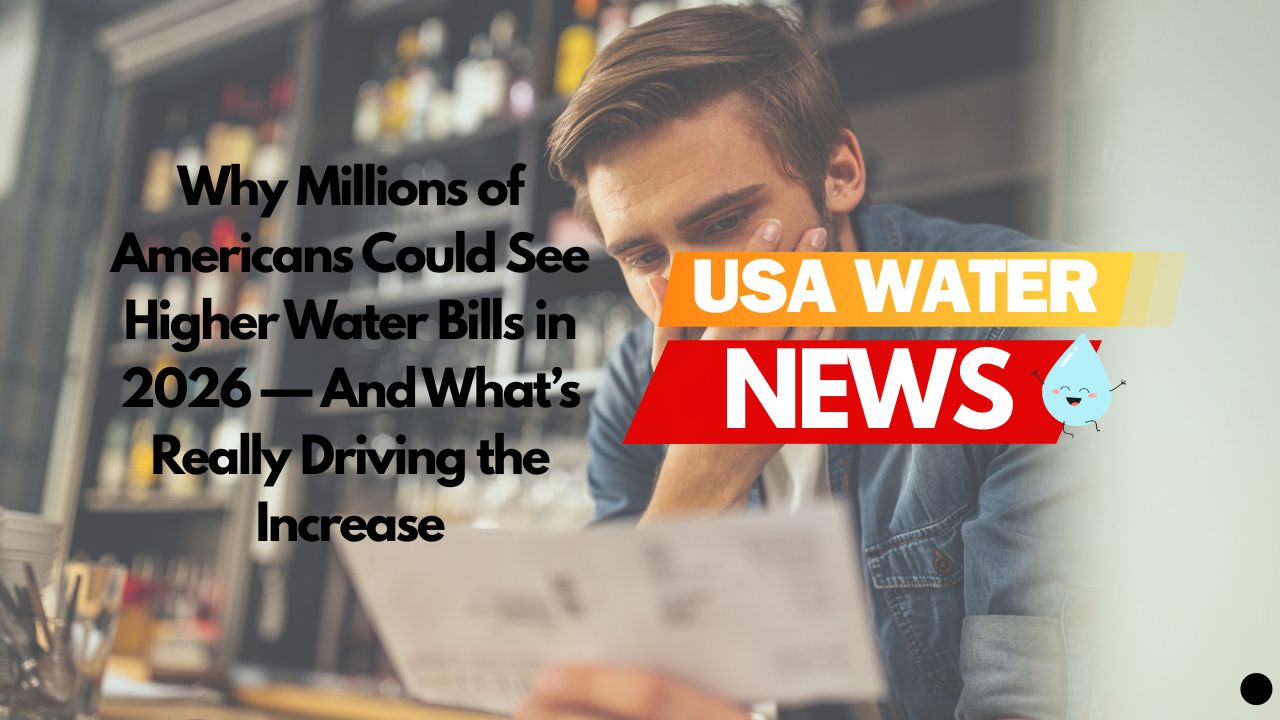Across the country, millions of Americans are opening their water bills and noticing something they didn’t expect: the numbers are creeping up. In some cities, it’s only a few dollars. In others, the increase is larger — enough for households to start asking why essential water service keeps getting more expensive.
Water utilities say the explanation isn’t simple.
It isn’t one single rule, or one single project, or one single weather event.
Instead, 2026 is shaping up to be the year when multiple pressures finally collide:
- new federal regulations,
- aging infrastructure needing replacement,
- booming population growth in certain regions,
- and increasingly unstable weather patterns.
These forces were building quietly for years.
This year, they’re all hitting at the same time.
And that combination is reshaping what water costs for millions of people — from Phoenix to Raleigh, from Tampa to Denver, and from the Midwest to the Pacific Coast.
Aging Infrastructure: The Cost Nobody Sees Until It Breaks
Most Americans never think about the pipes under their streets. Many of those pipes were buried 40, 60, even 100 years ago. Treatment plants built for smaller populations now serve cities twice — or even three times — the size they were designed for.
A recent national analysis estimated that the United States needs more than $500 billion in water infrastructure upgrades by 2035 — not for luxury, but just to keep systems functioning safely.
Utilities are dealing with:
- old pipes that leak or rupture regularly,
- treatment plants that need modernization,
- pumping systems designed for smaller cities,
- and rising costs of materials like steel, concrete, and chemicals.
Most of these upgrades can’t be delayed.
And when utilities approve multi-year capital projects, rate increases follow.
This is one of the biggest reasons 2026 is seeing a wave of pricing adjustments.
New EPA Rules Are Raising Compliance Costs
In 2024, the EPA finalized the first-ever national drinking water standards for PFAS — a group of chemicals linked to health concerns and found in water across the country. Utilities now have strict new testing and treatment obligations, and deadlines for compliance are coming fast.
While the rules are important for public health, the upgrades required to meet them are expensive:
- advanced PFAS filtration technology,
- new monitoring systems,
- redesigns of existing treatment processes,
- and, in some cases, entirely new facilities.
Large systems can absorb some of these costs.
Small and mid-size utilities cannot — and many are signalling that rate adjustments are inevitable.
This is why households in states like Michigan, Colorado, New York, and North Carolina may see their bills change during 2026.
Climate Stress Is Making Water More Expensive to Treat
Extreme weather used to be occasional.
Now it’s becoming part of the annual cycle.
Cities are dealing with:
- more intense storms that wash organic material into reservoirs,
- sudden heatwaves that trigger algae growth,
- droughts that change source-water chemistry,
- and wildfire ash affecting downstream water quality.
Each of these conditions increases the cost of treatment.
For example, in parts of California and Colorado, post-wildfire runoff can require additional carbon treatment. In Florida, high rainfall seasons force utilities to adjust disinfectant levels more often. In the Midwest, early snowmelt increases nitrates, requiring targeted treatment.
These changes don’t make water unsafe — but they do make it more expensive to produce consistently.
Fast-Growing Cities Are Spending More Just to Keep Up
In booming regions like the Sunbelt, Mountain West, and Southeast, utilities aren’t just maintaining systems — they’re racing to expand them.
Cities such as Austin, Phoenix, Raleigh, Charlotte, and Tampa are adding new pipelines, booster stations, reservoirs, and storage tanks to keep up with population growth.
Growth sounds like a positive trend — and it is — but expanding a water system is one of the most expensive infrastructure tasks a city can undertake.
And unlike general taxes, water utilities typically rely on customer rates to fund those expansions.
This is why some residents in high-growth areas are seeing their bills rise faster than those in slower-growing parts of the country.
Why 2026 Is the Year It All Converges
Here’s the real story:
none of these pressures are new.
Aging pipes have been deteriorating for decades.
Climate patterns have been shifting for years.
PFAS contamination has been studied since early 2000s.
Cities have been growing rapidly since the 2010s.
But 2026 is when all of these pressures reach the point where utilities can no longer delay major decisions. The financial burden is simply too large to absorb without raising rates.
For many cities, 2026 is the year when:
- long-overdue pipe replacements begin,
- PFAS compliance deadlines start looming,
- climate-driven treatment adjustments become routine,
- and population growth requires permanent system upgrades.
It’s the first year where utilities are openly telling residents:
“We can’t hold rates steady anymore.”
What This Means for Households
The good news is that most rate increases will be gradual — a few dollars a month rather than dramatic spikes.
And these increases are not tied to danger or contamination.
They’re tied to investment — building safer, more modern, more resilient water systems.
Still, for families already stretched thin, even small increases matter.
Affordability challenges are real for millions of households.
Utilities and regulators are increasingly discussing:
- income-based billing support,
- financial assistance programs,
- and ways to keep essential services accessible.
But the structural reality remains:
producing clean drinking water in 2026 is simply more expensive than it was ten years ago.
Looking Ahead: A More Reliable, Modern Water System
Even though rising bills are frustrating, the changes happening in 2026 may ultimately make drinking water more reliable for decades to come.
The upgrades being made today will:
- reduce leaks and breaks,
- improve treatment consistency,
- increase resilience during storms and heatwaves,
- reduce PFAS and other contaminants,
- support growing cities,
- and modernize aging infrastructure nationwide.
These are long-term investments in public health and system stability.
And while the cost is being felt now, the benefits will last far beyond 2026.
CleanAirAndWater.net will continue tracking how water rate changes unfold across U.S. cities — and helping residents understand what’s happening, why it’s happening, and what it means for their homes and budgets.
Sources & Notes
1. EPA – National Primary Drinking Water Regulations (PFAS Final Rule 2024)
https://www.epa.gov/sdwa/and-polyfluoroalkyl-substances-pfas
(Background on new PFAS standards and compliance timelines affecting utility costs.)
2. EPA – Drinking Water Infrastructure Needs Survey & Assessment (2023–2024)
https://www.epa.gov/dwsrf/20th-drinking-water-infrastructure-needs-survey-and-assessment
(Used for national infrastructure cost estimates and system age data.)
3. Underground Infrastructure – Study on U.S. Water Infrastructure Upgrade Costs
https://undergroundinfrastructure.com/news/2025/june/study-aging-systems-regulations-to-drive-515-billion-in-us-water-infrastructure-upgrades
(Supports the ~$515 billion infrastructure upgrade need through 2035.)
4. U.S. Congressional Research Service – Water Utility Rate Trends & Affordability (2024)
https://www.congress.gov/crs-product/R48271
(Cited for national survey showing 73% of utilities planning rate increases.)
5. EPA – Climate Change Indicators: Water
https://www.epa.gov/climate-indicators/climate-change-indicators-water
(Used for climate-driven impacts on water chemistry, treatment adjustments, and seasonal volatility.)
6. USGS – Water Quality Impacts From Wildfire, Storm Runoff & Organic Load
https://www.usgs.gov/mission-areas/water-resources
(Supports discussion of increased treatment demand from wildfires, rainfall events, and runoff.)
7. City Utilities Referenced (Austin, Phoenix, Raleigh, Charlotte, Tampa)
Austin Water: https://www.austintexas.gov/department/water
Phoenix Water Services: https://www.phoenix.gov/waterservices
Raleigh Water: https://raleighnc.gov/water-and-sewer
Charlotte Water: https://charlottewater.org/
Tampa Water: https://www.tampa.gov/water
(Used for population-driven infrastructure expansion projects and distribution system behaviour.)
Check your water now!
We have translated and compiled water reports on every state in the US, and covered over 100 cities. Find out how good your water is today!

Please read – our information
The information presented on cleanairandwater.net is compiled from official water quality reports, trusted news sources, government websites, and public health resources. While we strive for accuracy and thoroughness in our presentations, we are not scientists, engineers, or qualified water quality professionals.
Our mission is to present water quality information in an accessible, real-world format that helps people understand what’s in their water and make informed decisions about their health and safety. We believe that complex environmental information should be available to everyone in a format that’s easy to understand.
We make every effort to ensure our content is current and accurate, but we cannot guarantee that all information is complete or error-free. This website should not replace official communications from your local water utility or health department. We always recommend consulting official sources for the most up-to-date information regarding your specific water system.
Clean Air and Water is not liable for any unintentional errors, omissions, or outdated information. The content on this site is provided for informational purposes only and should not be considered professional advice.


